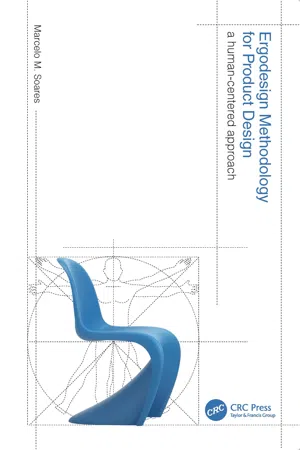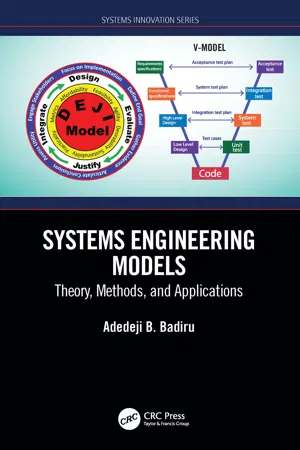Technology & Engineering
Ergonomics
Ergonomics is the study of designing equipment and devices that fit the human body and its cognitive abilities. It aims to optimize the interaction between humans and technology to enhance comfort, efficiency, and safety. By considering human factors such as posture, movement, and cognitive workload, ergonomics seeks to minimize the risk of injury and improve overall user experience.
Written by Perlego with AI-assistance
Related key terms
10 Key excerpts on "Ergonomics"
- eBook - ePub
- Jeremy Stranks(Author)
- 2007(Publication Date)
- Routledge(Publisher)
Many personal factors, such as physical and mental stress, can affect human capability and limit human performance. In some cases, these factors may create hazards in the workplace. People and their work operations can impose limitations which need to be addressed. This is where the study of Ergonomics and the application of ergonomic principles in the design of work interfaces are most important.Ergonomics is variously defined as- the scientific study of work;
- the scientific study of the relationship between man and his environment;
- the study of man in his working environment;
- fitting the man to the job or fitting the job to the worker;
- human engineering; and
- the study of the man–machine interface.
More detailed definitions include: (1) That branch of science and technology that includes what is known and theorized about human behaviour and biological characteristics that can be validly applied to the specification, design, evaluation, operation and maintenance of systems to enhance safe, effective and satisfying use by individuals, groups and organizations; and (2) The study of human abilities and characteristics which affect the design of equipment, systems and jobs . . . and its aims are to improve safety and . . . well-being.The scope of Ergonomics
Ergonomics is a multidisciplinary science which uses basic knowledge from the human, engineering, economic and social sciences. It incorporates elements of occupational medicine and health, occupational psychology, law and sociology. All these disciplines are associated with people at work and, therefore, represent an aspect of ergonomic study.Ergonomics, as applied to the man/machine interface, has been further defined as ‘the physiological, anatomical and psychological aspect of man in his working environment’. Ergonomics further embraces a number of disciplines including physiology, anatomy, psychology, engineering and environmental science. It examines, in particular, the physical and mental capacities and limitations of workers taking into account, at the same time, psychological factors, such as learning, individual skills, perception, attitudes, vigilance, information processing and memory together with physical factors, such as strength, stamina and body dimensions. - eBook - ePub
Electronic Measurement Systems
Theory and Practice
- A.F.P van Putten(Author)
- 2019(Publication Date)
- CRC Press(Publisher)
TwelveErgonomics OR HUMAN ENGINEERING12.1INTRODUCTIONThis chapter is devoted to one of the most neglected disciplines in measuring techniques. The reason is easy to understand because it is the least possible to quantify and was considered for a long time to be of little importance. However, equipment and systems have grown considerably in complexity and nowadays the relationship between humans and systems very often plays an important and vital role in efficiency, safety, comfort and health.To understand what is meant by Ergonomics the following definition will clarify the implications involved. Ergonomics is defined as the collection of knowledge about skills and limits of the human being and the science of applying this knowledge to equipment and systems to achieve a well-being and functioning of humans in which safety aspects and economical efficiency can play a vital role. The American equivalent for Ergonomics is ‘human engineering’. The word Ergonomics was first introduced by K F H Murrel in 1949 and is derived from the Greek words ergon = work and nomos = knowledge. The person involved in Ergonomics is called a human engineer, for whom the following topics are subjects of investigation:1 creating good working conditions2 creating efficient tools, equipment and systems in which a direct relationship with the human being is present3 the investigation of maximum-load conditions for the human being performing various tasks under static and dynamic environmental conditions4 the mechanisms with which the required information is perceived and the relevant thresholds for the human being5 the way in which information is presented to allow unambiguous interpretation.One of the best examples in which all of these aspects play a vital role is flying an aeroplane. Optimum conditions and circumstances between pilot and machine must be present to fulfill all requirements. A pilot should be in good condition and be able to perform his or her tasks with a machine which is also maintained in good condition. The different flying tasks such as starting, flying, approaching and descending are tasks with different loads for the pilot with possible rapid changes in working circumstances. All equipment, systems and subsystems must be designed in such a fashion that optimum safety, attainability and operability are guaranteed and that the displayed information can be understood without ambiguity. - eBook - ePub
- André Liem(Author)
- 2017(Publication Date)
- Wiley-ISTE(Publisher)
1.1. History and definition of ErgonomicsErgonomics is the scientific discipline investigating the interaction between humans and artifacts and the design of systems where people participate. It applies systematic methods and knowledge about people to evaluate and approve the interactions between individuals, technology and organizations at work and during leisure. The purpose of design activities is to match systems, jobs, products and environments to the physical and mental abilities and limitations of people [HEL 97]. The aim is to create a working environment (as far as possible) that contributes to achieving healthy, effective and safe operations.The study of Ergonomics (Gr. ergon + nomos) was originally defined and proposed by the Polish scientist Jastrzebowski in 1857, as a scientific discipline with a very broad scope and a comprehensive range of interests and applications, encompassing each human activity, including labor, entertainment, reasoning and dedication [KAR 05]. A historical overview of Ergonomics will be presented in the textbox below to make certain events explicit, where business strategies, the design of products and services, and different ergonomic interventions connect. The historical timeline indicates that Ergonomics has engaged in systemic ways of strategizing as early as the beginning of 20th Century Ergonomics. However, only in the past 25 years has Ergonomics gained acceptance among business managers.According to Perrow [PER 83], the problem of Ergonomics is that too few ergonomists work in companies, that they have no control over budgets and people, and that they are seen solely as protectors of workers, rather than creators of products, systems and services. Presently, the value of Ergonomics extends beyond occupational health and safety and related legislation. While maintaining health and safety of consumers and workers, Ergonomics has become more valuable in supporting company’s business strategies to stay competitive. This has led to the acceptance of the following broader definition of Ergonomics: - eBook - ePub
Designing Service Excellence
People and Technology
- Brian Hunt, Toni Ivergard(Authors)
- 2014(Publication Date)
- CRC Press(Publisher)
Seemingly, humankind currently lacks a good understanding of the ways in which human activities are affecting the balance in nature. Fundamentals and Criteria of Ergonomics and Usability Ergonomics focuses on the interrelation between humans and complex technological systems. The overall purpose of Ergonomics is to contribute to a balance between people and technology. Figure 5.1 illustrates the relationship between people and technology in low and high levels of automation. Although the sum of people and technology is the same in (a) and (b), levels of production output are likely to be higher in (b) to reflect the higher employment of technology in the work process. However, production in (a) may be related to a specialized human skill or craft, such as handcrafted embroidery, where the input of human expertise is high and limited use is made of technology to support the human labor. Figure 5.2 illustrates the relationship between people and technology where automation is at a very high level and where automation is nonexistent. FIGURE 5.1 People and technology in automation. (From Toni Ivergård and Brian Hunt (2010), New Approaches in the Design of Future Control Rooms, invited plenary paper for the International Control Room Design Conference (ICOCO), Paris, October 25–26.) FIGURE 5.2 People with and without technology. (From Toni Ivergård and Brian Hunt (2010), New Approaches in the Design of Future Control Rooms, invited plenary paper for the International Control Room Design Conference (ICOCO), Paris, October 25–26.) The work environment represented in (c) has highly intensive use of human labor and no technology to support this labor. Nowadays, there are very few examples of work that use no technology whatsoever. Even a simple farm implement is a form of technology - eBook - ePub
Ergodesign Methodology for Product Design
A Human-Centered Approach
- Marcelo M. Soares(Author)
- 2021(Publication Date)
- CRC Press(Publisher)
According to the IEA – International Ergonomics Association (2020), Ergonomics can be understood as “the interactions between human beings and other elements of a system and the profession that applies theory, principles, data and methods to design, in order to optimize human well-being and the overall performance of the system”. Note that this official definition of Ergonomics uses the term “design” as a project, change, intervention. In this way, Ergonomics is involved in the analysis and design of products and systems of various levels of complexity in order to optimize the interface between the user and the product, the environment and system, be it a toy or an automobile, a control room at an international airport and the equipment, environments, and systems used by its operators.NOTEProduct Ergonomics is the area of study which aims systematically to analyze artifacts and their interaction with humans (Soares, 2012). According to the author, it deals with the use of ergonomic methods and tools for the analysis of objects manufactured on an industrial scale and prioritizes the relations of the user, operator, consumer, and those who maintain the product.Ergonomics is a discipline supported by scientific data; product design is the process of creating new and improved products for the use of people and manufacturing aims to convert raw material into manufactured products, thus producing valuable and tradable goods. Ergonomics has clearly strong inputs from science while Product Design is assisted by aesthetic and subjective inputs. Manufacturers, on the other side, are mainly interested in the performance of the product in the market in terms of the quantity of goods sold and the profit made.Usually, the three groups have different approaches. Ergonomists focus mainly on product usability and safety, employing empirical methodologies to achieve this purpose. Product designers endeavor to seek a balance between form, value, and appearance of products, relying on experience, intuition, and creativity to achieve this end. Manufacturers are more pragmatic having to fight for survival in an extremely competitive environment. For a long time that ergonomists have criticized designers for producing unsafe products, failing to emphasize the importance of usability and the lack of scientific reasoning (Grandjean, 1984; Wood, 1990). On the other hand, designers have said that ergonomic data are presented in a format or language unsuitable for designers. They represent an obstruction to design creativity. - eBook - ePub
- Robert Bridger(Author)
- 2017(Publication Date)
- CRC Press(Publisher)
Poor system functioning can be caused by a lack of compatibility in some or all of the interactions involving the human operator. This incompatibility can occur due to a variety of reasons. For example,• Human requirements for optimum system functioning were never considered at the design stage (a failure to integrate HFE in the design process).• Inappropriate task design (e.g., new devices introduce unexpected changes in the way tasks are carried out and these are incompatible with user knowledge, habits, or capacity or they are incompatible with other tasks)—essentially a failure of succession.• Lack of prototyping (e.g., modern software development is successful because it is highly iterative. Users are consulted from the conceptual stage right through to preproduction prototypes).Brief History of ErgonomicsErgonomics came about as a response to the design and operational problems presented by technological advances in the twentieth century. It is a hybrid discipline that emerged when applied scientists came together to solve complex cross-disciplinary problems, and it owes its development to the same historical processes that gave rise to other disciplines such as industrial engineering and occupational medicine. The core sciences from which Ergonomics is drawn are as follows:• Psychology• Anatomy• Physiology• Physics (particularly mechanics and environmental physics)• EngineeringIt has also been heavily influenced by other emergent disciplines, notably,• Industrial engineering• Industrial design• Systems theoryScientific Management and Work StudyScientific management, developed by Taylor, and work study, developed by the Gilbreths, are precursors of Ergonomics. Both were developed at the beginning of the twentieth century and were based on the realization that productivity could be improved by redesigning the way work was done and not just by using better machines. Taylor (1911) was a mechanical engineer who is famous for his book, The Principles of Scientific Management - eBook - ePub
- Martin Helander(Author)
- 2005(Publication Date)
- CRC Press(Publisher)
Note again that the main purpose is design (Chapanis, 1995). Ergonomics is thereby different from most of the bodies of knowledge that are used to support HFE. Ergonomics is different from anthropology, cognitive science, psychology, sociology, and medical sciences, since their primary purpose is to understand and model human behavior—but not to design.The International Ergonomics Association (2000) provides the following definition:“Ergonomists contribute to the design and evaluation of tasks, jobs, products, environments and systems in order to make them compatible with the needs, abilities and limitations of people.”“Ergonomics (or human factors) is the scientific discipline concerned with the understanding of interactions among humans and other elements of a system, and the profession that applies theory, principles, data and methods to design in order to optimize human well-being and overall system performance.”Throughout the book, I will use the terms Ergonomics, human factors, and HFE interchangeably. I will assume that there are no differences between these words, although, as we shall see below, the histories of human factors and Ergonomics are quite different.1.3 THE EARLY DEVELOPMENT OF HUMAN FACTORS AND Ergonomics (HFE)
One may argue that designing for human use is nothing new. Hand tools, for example, have been used since the beginning of mankind, and Ergonomics was always a concern. If hand tools are appropriately designed they can concentrate and deliver power, and aid the human in tasks such as cutting, smashing, scraping, and piercing. Various hand tools have been developed since the Stone Age, and the interest in ergonomic design can be traced back in history (Childe, 1944, Braid wood, 1951).Bernardino Ramazzini was a professor of medicine at Padua and Modena in Italy. In 1717 he published a book called The Diseases of Workers - eBook - ePub
Systems Engineering Models
Theory, Methods, and Applications
- Adedeji B. Badiru(Author)
- 2019(Publication Date)
- CRC Press(Publisher)
chapter fourErgonomics in systems design and modeling
Introduction
This chapter is based on Peacock (2014). Human Factors is the mental or cognitive aspect of a system design while Ergonomics is the physical aspect. Design is the process of converting the voice of the customer into some product or process. The problem however is which customer’s voice do designers listen to. Take the examples of a smart phone or a car or the process of getting money from the bank or the university you choose to attend. All of these have many customers (or stakeholders), each with different requirements. The end users are interested in effectiveness and ease of use of the product or process for their particular needs, which may differ. They will also be interested in cost. Others may emphasize safety and security. But there are other “customers” perhaps with different requirements. What about the line workers who assemble the product or the employees of the bank or university? There are also the managers and shareholders of the companies who manufacture the products or manage the processes. They are interested in sales and profits. The result is that design is a process of resolving many, sometimes conflicting requirements.One way of addressing this problem of design is to look at the Ergonomics of the design process. There are many stages in this process including concept development and selection through manufacturing process design and production, to sales, operations, and maintenance. Recently, design for disposal has become a concern for many products. Each stage has different customers. Surprisingly, much of this design process takes place around a table where the different stakeholders communicate the importance of their particular requirements. And this is where the fun starts and the Ergonomics of process design can have its opportunity to shine.The first step is to agree on the scope of the many requirements. In general, the purposes of all products, processes, and organizations are Effectiveness, Efficiency, Ease of Use, Elegance, Safety, Security, Sustainability, and Satisfaction (E4S4). These purposes are deliberately general and comprehensive, but they will include more specific and quantitative concepts in particular instances. For example, efficiency includes the optimal use of resources such as money, time, people, and materials and security includes process failure due to malicious or accidental acts of third parties. Most organizations will identify growth and stability as primary purposes, but in reality these are dependent on E4S4. - eBook - ePub
- R. S. F. Schilling(Author)
- 2013(Publication Date)
- Butterworth-Heinemann(Publisher)
C. Reich – ‘The loss of the American Dream.’The Times , London, 17 April 1971.INTRODUCTION
If machines are to be turned to human ends they must first be built ‘fit for human use’. This is the aim of Ergonomics which seeks and makes use of knowledge about the relationship between man and machine. Good Ergonomics practice requires that attention be given to the ‘machine’, not only in its narrow sense of ‘mechanical contraption’ but also to organizational and institutional machinery; in fact, man’s relationship to almost any artefact can be said to be the concern of Ergonomics.The purpose of this chapter is to look at Ergonomics in relation to occupational health; to describe the kind of population studied and those aspects of human functions to which Ergonomics is applicable and, finally, to give an account of the methods used. Thus it is hoped to present a new and, as yet, somewhat unfamiliar view of man at work. It is not expected to evoke general agreement among present-day ergonomists whose basic training may be in medicine, physiology, anatomy, psychology or engineering. In the future ergonomists are likely to be more specifically trained.The term Ergonomics, derived from the Greek ‘ergon’ (work effort), and ‘nomos’ (law), seeks to express in one word a wide range of scientific studies and practices. In North America these are variously known as ‘human factors science’, ‘human engineering’, or ‘engineering psychology’; in Europe as ‘work physiology’ and recently as ‘anthro-potechnics’. It is more than 20 years since the term Ergonomics was first used. It is still neither well known nor well understood. It is in effect more an attitude to practical problems and a set of skills than a separate academic discipline. It has been well said that ‘the basic skills of the ergonomist rest in his expertise in the acquisition of evidence and the drawing of conclusions in relation to man in man–machine systems’ (Singleton, Fox and Whitfield, 1970 - eBook - ePub
- Andrew S. Nicholson, John E. Ridd(Authors)
- 2014(Publication Date)
- Butterworth-Heinemann(Publisher)
Part 1 The role of ErgonomicsPassage contains an image Chapter 1
The advantages of Ergonomics intervention
E.J. CullenPublisher Summary
This chapter discusses the advantages of Ergonomics intervention. The importance of Ergonomics in the prevention of accidents and ill health at work brings together many diverse areas of Ergonomics for discussion in relation to the improvement of occupational health, safety, and efficiency. It is important to recognize that any Ergonomics principles applied to health and safety can also result in other benefits, such as increased efficiency and better worker morale. The application of Ergonomics principles is therefore essential to good occupational health and safety practice for all work activities. These principles are considered frequently in relation to high-hazard industries. The proper design of the man–machine interfaces of control rooms and operating procedures can lessen the chance of human error. The rapid technological change involves the introduction of computers and visual display units that have had an impact in the office as well as in the factory. It should be recognized that these Ergonomics principles can be applied as effectively in the office as elsewhere. The challenge is to apply existing Ergonomics principles in the workplace now and to develop new techniques to overcome existing problems.This opening chapter does not address a specific topic but introduces an hypothesis that the succeeding chapters set out to consider. The hypothesis presented is that: ‘The application of Ergonomics within any and every industry or business can have benefits both for the worker and for the work process in a number of different ways, relating to health, safety and efficiency.’ The text offered here is an edited version of the opening address given by Dr John Cullen, Chairman of the Health and Safety Commission, at the international symposium entitled ‘Workwise: Ergonomics, Health and Safety’.
Index pages curate the most relevant extracts from our library of academic textbooks. They’ve been created using an in-house natural language model (NLM), each adding context and meaning to key research topics.









